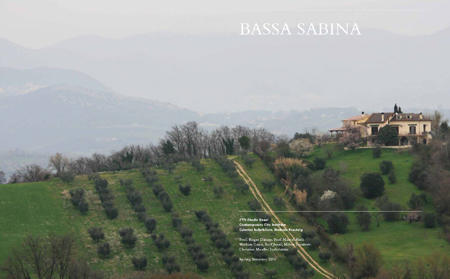Bassa Sabina Quiet Zone – Rural Landscape under Pressure

Students: Caterina Inderbitzin, Stefanie Krautzig
Around twenty kilometers north or Rome, between the Tiber and the “Monti Sabini” lies a hilly, fertile region that at first sight seems entirely unaffected by Rome’s energies. This highly cultivated landscape seems still entirely based on agricultural production. Olive trees intersected by small pastures, fields and vineyards dominate the lower reaches while the hills are often bosky and occupied by small villages, monasteries or castles. In its inertia, this landscape has preserved the beauty and clarity that made it a favored motive for Romantic painters in the XVIII and the XIX century. At the same time the rising trend of Romans moving further into the periphery, especially the North, cannot leave this region unaffected. The ‘Treno Metropolitana FM1’ now extends Rome’s public transport network all the way to Orte in 15 minutes frequency. Rome’s Tiburtina station can be reached from Fara in Sabina in less than 40 minutes. Communes such as Capena, Fiano, Forano and Fara in
Sabina have therefore become the fastest growing communes in the Lazio region. All this indicates that processes of urbanization are, albeit not very visible, in full effect. The subject
of this work would be studying and exposing these forces and their impact on the traditional cultural landscape. How do the demands on the territory change, with new activities such a leisure and sport, superimposing agriculture? Where do urban living schemes collide with traditional rural life? How far is the reach of Rome? Is the rural economy of villages transformed into an urban one? What are the strategies employed to deal with these transformations?

